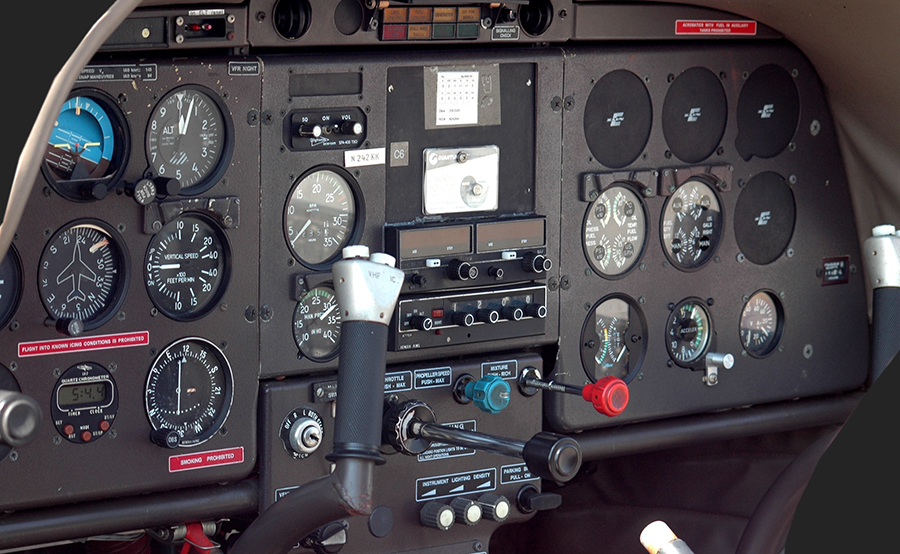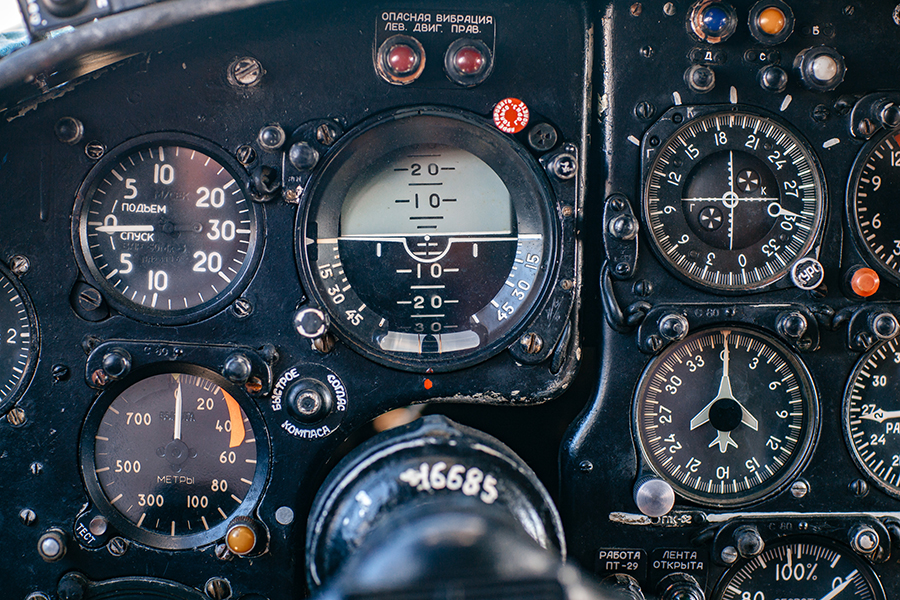-
What is Magnetic Heading in Aviation?
-
How do You Find the Magnetic Heading?
-
Understanding the Heading Indicator
-
What is the Difference Between Magnetic Heading and True Heading?
- Magnetic North
- True North
- Understanding Variation and How to Apply it When Flying
-
Magnetic Heading and Flying | 5 Important Things to Be Aware Of
- Instrument Error
- Acceleration Error
- Headings and Meteorological information
- Apply the Right Correction for Variation
- Parallax
-
Conclusion
Flying in the right direction is vital if you are to navigate successfully. Surprisingly, you will need to be aware of a few different references when talking about heading into aviation. Magnetic heading and understanding what it means are key to successfully making your way from point A to B. Today we will look at magnetic heading, how it is calculated, where you can find it, and some common pitfalls when flying.
What is Magnetic Heading in Aviation?
Magnetic heading is the direction the aircraft is pointing, given by reference to a magnetic compass. The magnetic compass will always be aligned with the north magnetic pole. It is important to note that it is not the same as the geographic North pole! The two are actually quite far apart.
Here’s how magnetic heading works in general terms: –
A compass needle will always point towards the magnetic north pole. Magnetic north is a datum. As long as we remember this fact and have a way to see where north is, we can determine which direction we must be pointing in relation to this datum.
We call this direction our magnetic heading.
Magnetic heading is given as a bearing from magnetic north. This is measured in degrees. Think of the compass as a circle, divided equally into 360 parts. Each tiny increment is one degree. The bearings or cardinal points of the compass are as follows: –
| Cardinal Point | Magnetic Heading |
| North | 0°/360° |
| North East | 045° |
| East | 090° |
| South East | 135° |
| South | 180° |
| South West | 225° |
| West | 270° |
| North West | 315° |
To give examples based on the above table, if you were flying east, it could also be said that your magnetic heading is 90°. Or, to put it another way, you are flying at a 90° angle with reference to the datum of magnetic north.
Of course, the above only illustrates 8 different magnetic headings. The good news is that we aren’t limited to only these 8 headings. There are 360 of them!
How do You Find the Magnetic Heading?
Magnetic heading is very easy to deduce. The simplest way to find it is to read the aircraft’s compass. This will show you the direction you are facing with reference, in degrees, from magnetic north.
By reading the bearing given on the compass and knowing that the compass is always aligned with the magnetic north, you can always work out which way you are facing.
This information is presented in the form of a lubber line, a small thin line that will rest above the magnetic heading of which you are facing.
And, your aircraft will certainly have a compass!
According to Chapter 14, part 91 of the Code of Federal Regulations, all aircraft must have a magnetic direction indicator fitted for VFR flight.
However.
The compass may not be the only instrument on board from which you can read your magnetic heading. There is another instrument that is much more accurate.
The Heading Indicator is the primary tool to work out your magnetic heading. It forms part of the ‘six pack’ of cockpit instruments used extensively in flight. This is also known by the following names: –
- Direction Indicator
- Directional Gyro
Let’s look in a little more detail as to how a heading indicator works and why it is beneficial…
Understanding the Heading Indicator
If you have ever tried to read a compass, you’ll already know that they move around a lot and take a while to ‘settle’. Obviously, this isn’t ideal in a fast-moving aircraft.
While in the early days of flying, this was the only way of working out magnetic heading, clever engineers came up with a solution. The gyro-driven heading indicator.
The directional indicator (or DI for short) gives exactly the same information as the magnetic compass, with a few key advantages: –
- A direction indicator is much more stable and intuitive to read
- The DI isn’t susceptible to moving with acceleration or ‘G’ forces
- A Directional Gyro isn’t affected by magnetic interference.
But how does it work?
It’s all to do with gyroscopes…
The directional indicator has an internal gyroscope, which provides stability. When a gyroscope is set spinning, it maintains rigidity in space.
If that sounds complex, don’t worry.
Essentially, the axis around which the gyroscope is spinning will stay pointing at whatever we aim it at.
You can see a really neat video that shows this concept in action here…
And what do we aim the axis at?
Magnetic north, of course!
We ‘cage’ or ‘slave’ the gyroscope so that its axis aligns with the magnetic north. Once again, we have created a ‘datum’ against which we can measure our magnetic heading. Provided this heading is made to match our magnetic compass in relatively stable conditions, we can accurately work out our heading.
However, there are a few things we need to be really careful of when flying a magnetic heading…
All us to introduce you to a little thing called variation…
What is the Difference Between Magnetic Heading and True Heading?
How would you feel if we told you that there is more than one ‘North’?
We aren’t joking. It is true!
For navigational purposes, there are, in fact, two ‘norths’ that we need to be aware of: –
Magnetic North
Under the earth’s surface are vast quantities of metals, and these produce a magnetic field. All magnetic fields have poles. The magnetic north pole, where your compass will point, currently lies somewhere under Northern Canada.
Currently?
Indeed! The magnetic pole actually moves a little each year! This means that, even if you stood completely still, your compass would point in a slightly different direction over time!
As pilots, our instruments always point to, and reference, magnetic north.
True North
True north is the point at which the world turns on its axis. When people talk about the north pole, they refer to the true north.
Navigational charts have lines of longitude and latitude. The longitudinal lines all meet at true north, and we calculate our headings based on these lines when plotting a route.
For the eagle-eyed among you, you’ll have noted that we said the magnetic north pole is in Canada
The geographic north pole (or true north if you prefer) is not in Northern Canada. In fact, the difference between true north and magnetic north is presently around 310 miles!
The above presents us with a little bit of a dilemma.
Our instruments point to magnetic north, yet the charts we use all reference true north as their datum. Meaning there is a difference between what we call ‘north’.
There is an official name for this difference.
It is called variation.
And understanding variation is really important if you want to navigate successfully.
Here’s why it is so important and how to apply it to aerial navigation…
Understanding Variation and How to Apply it When Flying
Variation, the difference between true north and magnetic north, varies greatly depending on your geographic location.
In some areas, the difference is not that great, and in others, it is significant.
Want an example?
If you were flying around in Ocala, Florida, there is around a 2° difference between true north and magnetic north. That is so small as to be practically insignificant.
However…
Let’s say you were flying to San Jose, California. There is a difference of around 17° between your magnetic heading and your true heading! If you don’t make a correction, you will be flying in completely the wrong direction!
Variation is typically depicted on navigational charts with a faint dashed line. The variation will be annotated along the line to allow you to apply a correction. It will normally look something like this: –
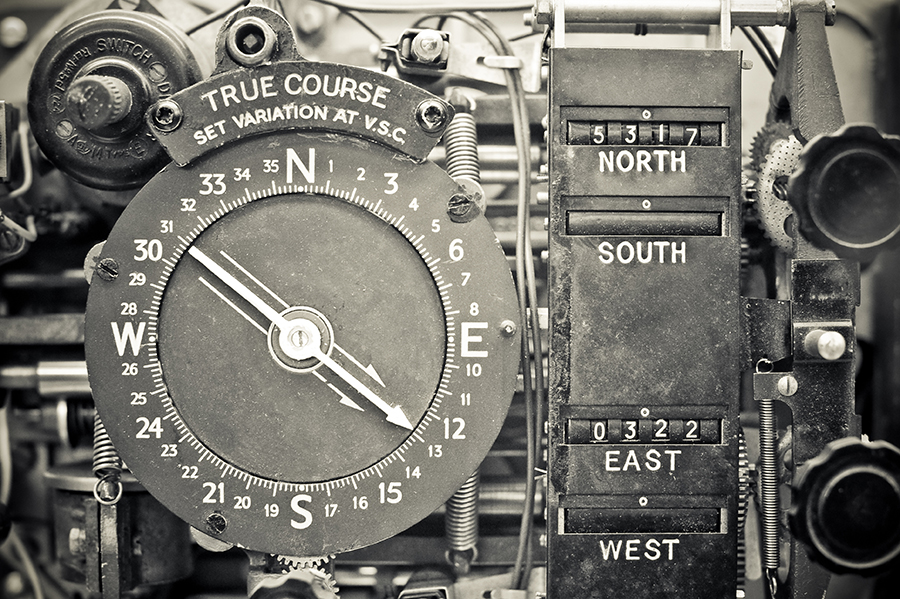
“3°E”
But what do we do with this information?
Thankfully, we can apply a few simple fixes to make sure we head in the right direction. Depending on the variation, we either add or subtract it to the headings we measure on the map to work out the course we must fly, referencing our compass or direction indicator.
It’s actually really easy to do. Here are a couple of simple phrases to remember when calculating a course to fly and converting the true bearings taken from your chart to magnetic headings to fly when you are aloft: –
- “Variation EAST, magnetic LEAST” – If the variation annotation features the letter “E”, we must subtract the variation from the course measured on the chart to give an accurate magnetic bearing to fly.
- “Variation WEST, Magnetic BEST” – If the variation annotation features the letter “W”, we must add the variation from the course measured on the chart to give an accurate magnetic bearing to fly.
Here are a couple of quick examples.
- True course measured on the map: 195°
- Variation: 17°W
- “Variation west, magnetic best.”
- True Course (195°) + Variation (17°) = 212°
- Magnetic bearing to fly: 212°
- True course measured on the map: 101°
- Variation: 12°E
- “Variation east, magnetic least.”
- True Course (101°) – Variation (12°) = 089°
- Magnetic bearing to fly: 089°
It really is that simple!
Magnetic Heading and Flying | 5 Important Things to Be Aware Of
People have been using compasses to navigate for over 1000 years. However, aviation is a relatively recent phenomenon. Unlike intrepid seafarers and explorers, we can’t always stop and check when working out navigational errors.
Fortunately, there are a few things we can keep a lookout for to avoid going awry. When discussing magnetic heading, always be aware of the following: –
Instrument Error
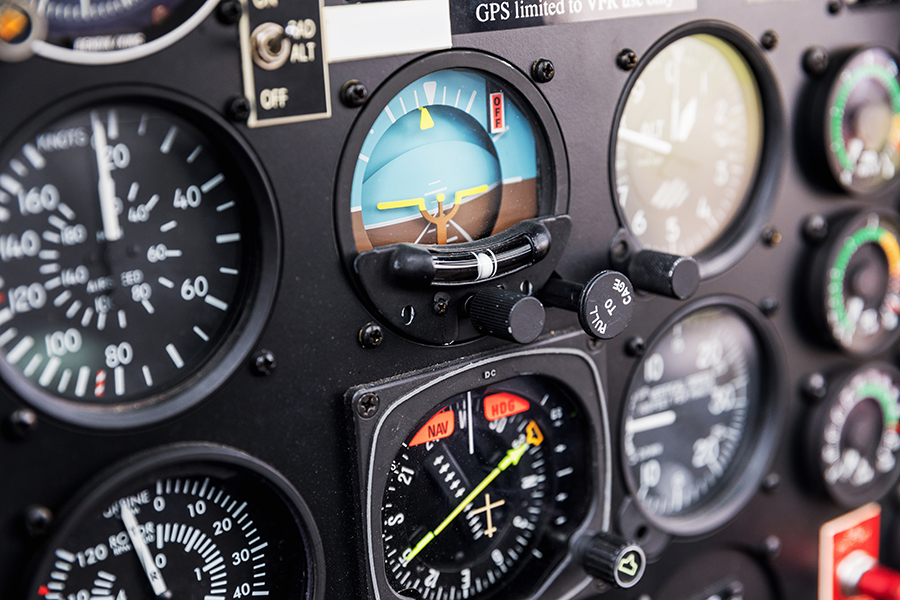
No aviation instrument is perfect, and our compass and direction indicator is certainly no exception!
Instrument errors in compasses are rare, there have been around for so long as they are pretty reliable. However, there are a few things that can influence them adversely.
- Avoid leaving metal items near the compass! – While compasses love to point towards the magnetic north, any metal placed near them can adversely influence them and give a false reading. During your preflight inspection, ensure that no metal items, such as clipboards, flight headsets, screwdrivers, or tools, are left anywhere near the compass
- Electrical Fields – Magnetism and electricity are interlinked. Electrical currents generate their own magnetic field. The snag is that most aircraft have lots of electrical equipment, such as radios, GPS, ignition systems, and heating elements on board.
What’s the answer?
- Well, most compasses are checked with all electrical components running. An engineer will measure how much the compass heading changes with this electrical equipment on and off. They will then write and attach a compass card, showing how much you need to compensate. Pay attention to this card if navigating only using the compass.
- Caging your Direction indicator – While the direction indicator is very reliable, you must regularly check that it matches the heading on the compass.
Gyros aren’t frictionless. You will find that your DI will begin to ‘wander’ if not synchronized or ‘caged’ with your magnetic heading taken from the compass.
Make this a regular check during flight, around every 15 minutes, ensuring navigational accuracy. It is also worth doing every time you turn overhead a fix. It’s better to identify an error before you turn than figure it out when you’ve flown miles in the wrong direction!
Acceleration Error
As we said previously, compasses are reliable, but they are not very stable.
They move around. A lot!
One area where the DI is far superior to the compass is when you are accelerating or decelerating. Provided you are flying in the Northern hemisphere, you’ll find that your compass will ‘turn’ in a northerly direction when you accelerate. When decelerating, it will show a turn to the south.
The good news is that this is only apparent when changing speed, and the compass will give an accurate reading when it is stable. When making turns using your compass for magnetic heading, take a directional reading only during straight and level flight.
Headings and Meteorological information
This is a big gotcha in places with significant variation.
Air traffic control clearances, runway markings, and headings are all given in degrees magnetic.
Yet…
Meteorological information is given in degrees true.
Once again, you will have to apply a correction to any non-aviation meteorological information to find out where the wind is actually coming from.
It could be the difference between being able to land or facing a crosswind and making your approach out of limits.
Apply the Right Correction for Variation
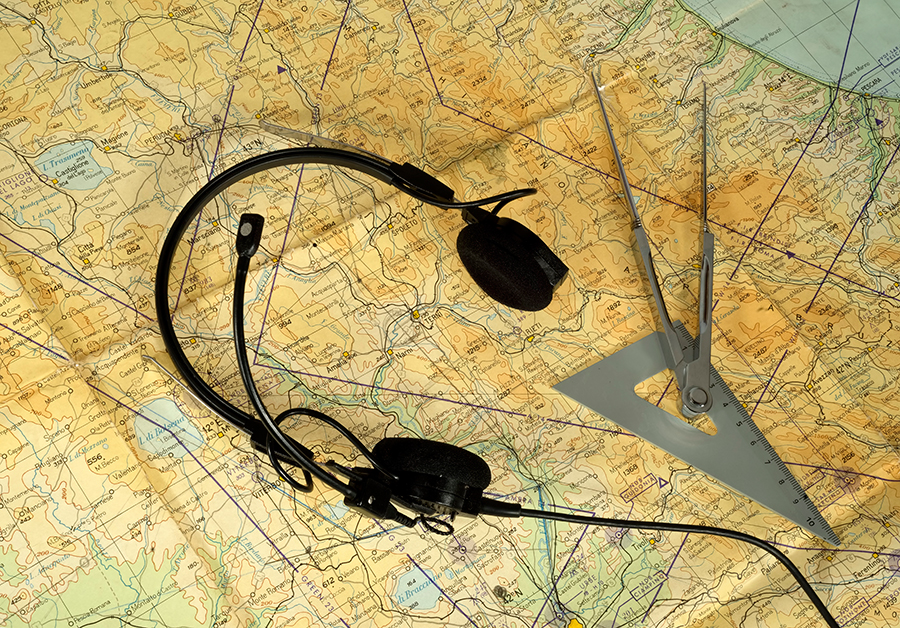
This is a big one!
Most student pilots will make this error at one point or another. They will either add the variation when they should subtract it or vice versa.
Why is it such a big deal?
Let’s say the variation was 18°W. And we want to fly a course of 90°.
We should add the variation to our true course because the variation is westerly. The correct heading to fly on our compass or directional gyro should be 108°, right?
Except, we make a mistake and subtract it instead. This would give us an incorrect course to fly of 072°.
This makes our magnetic heading very incorrect. In fact, we’d be a whole 36° degrees off course! We’d have no chance of flying anywhere near the right direction!
The easiest way to avoid this error is to double-check your flight log once you have performed the necessary calculations and take your time when planning a flight.
Parallax
Parallax is a minor yet relatively common error when navigating using directional instruments. When viewed from the side, the lubber line may give a slightly different reading than if you read it straight on.
The difference isn’t huge, but when flying long legs, a small parallax error can lead you to miss your target by several miles!
Conclusion
Understanding magnetic heading ensures that you can navigate with a high degree of accuracy. And it is something that you will be checked out on during your flight training. If you enjoyed reading this article, why not go a little further and embark on an online aviation ground school course. You’ll learn about all the aircraft instruments, how they work, and become an expert in aeronautical navigation, all in the comfort of your own home!
